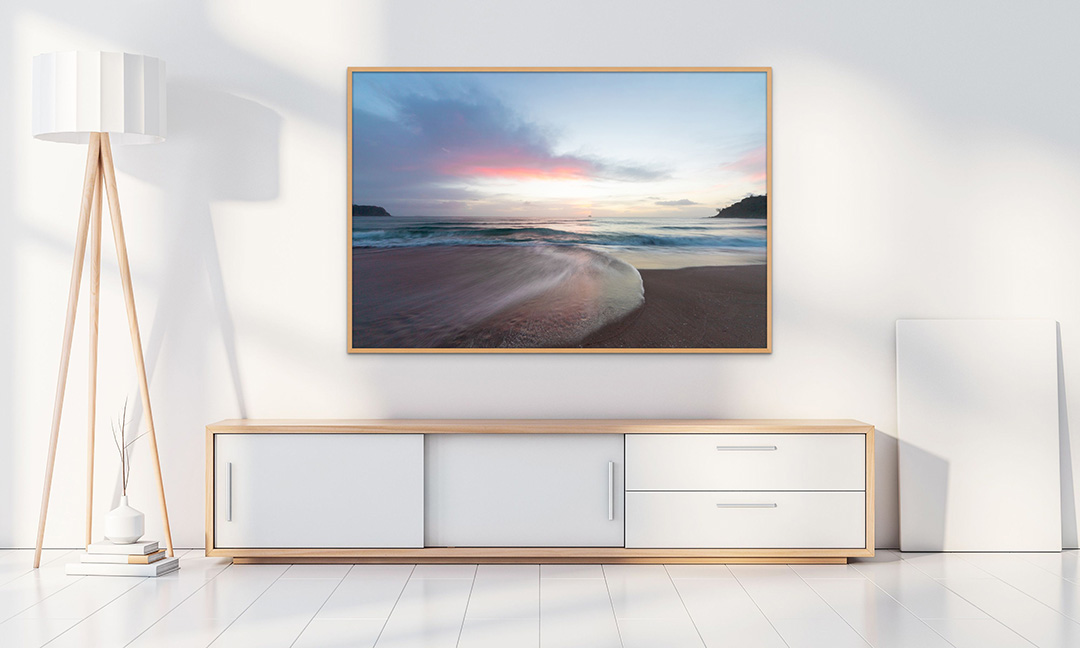- Free Shipping On All Framed Prints!
Why Quality Matters When Buying Art and Photo Prints

Date
How Do I know if I'm buying quality Art?
Not all art is made the same, including photography. There are SO many different papers, frames, glass, mounting methods and it is sometimes hard to tell one from the other.
How do I know if I am buying quality art?
There is a lot of wall art in this world, so where do you start when picking the perfect piece to liven up your home? Even though a piece you love may seem like it is good quality, you need to do your research or you may end up wasting your money.
Why is quality so important?
So you’ve found a piece you’re in love with. You are so excited to take it home and hang it, you have just the perfect spot for it. It is stunning, all your friends comment on it. But after a year, it looks more like a faded photo from the 60’s than the vibrant beach landscape you bought only months ago. You are so embarrassed by it that you can’t even look at it anymore.
Not all art is made the same, including photography. There are SO many different papers, frames, glass, mounting methods and it is sometimes hard to tell one from the other.
And long story short, if you don’t buy quality, you will have to spend more money on another piece. It’s true when they say “buy nice or buy twice”.
Check the price tag.
Price is usually a good indication of quality. Generally speaking, anything over $500 USD is likely to be good quality. Of course larger pieces are always more expensive than smaller pieces.
My advice would be to shop around, get an idea of prices from different artists and go for something that is priced in the mid to high-end range. Shall I say it again? Buy nice or buy twice!
Find out what materials were used to create the print.
A good quality print will last for 100 years or more. So unless someone discovers a pill that will make us live forever, your purchase should be around long after you are gone.
So what to look for? The paper type, the printing process, and sometimes, the ink type.
You want to choose a piece that is printed on archival paper. Over time, paper can cause the print to fade, or the paper itself to change colour. To avoid this, you need to choose a piece that is printed on archival paper.
What printing process was used to print the piece? Not all printing processes are the same. In my eyes, there are only two options for printing fine art. Photographic (c-type) prints or Giclée (inkjet) prints.
Photographic prints are printed on light sensitive photographic paper which is processed using photographic chemicals. They are very high quality and have good archival properties.
Giclée prints are printed using a professional inkjet printer, which uses pigment based inks on high quality archival paper. If purchasing a Giclée print, it pays to check that both the paper and the inks used are archival.
Most limited edition prints will come with a certificate of authenticity which includes notes about the printing method.
Is the frame suitable for your print?
Believe it or not, the frame is super important. Why pay a ton of money for a piece of fine art that has a crappy frame which reflects so much light you can’t even see the print behind the glass?
And that’s only one potential framing faux pas.
The most important things to consider when selecting a frame are, glass, frame material, mat and hanging system.
I could write a whole article just on glass, but in summary, you should look for a museum-grade glass. A non-reflective glass that has UV filtering. This will ensure you can see the print clearly, and that it is protected from sunlight. Acrylic is a good alternative to glass, especially for larger prints and is also available with UV filtering.
By frame material, I just mean what the frame is made of. It’s like buying a piece of furniture really. I prefer a solid wood frame, as it is usually more durable. What wood your frame is made of often depends on the country the frame is made in.
Does the frame have a hanging system? Usually this would be a cord mounted across the back, or a hook of some sort. If the frame doesn’t have a way to hang it, that is something you are going to have to sort out when you get it home. Not a deal breaker, but a pain in the ass for you when youre trying to hang it.
If your print is framed by a professional framer, it is likely to be high quality. Even professional framers have varying quality of glass they use though, so that is an important one to check. I once got a print framed, then hung it in my lounge where all I could see were reflections in the glass. Not cool.
If you are interested in a piece of art and you are unsure about the quality, just ask a few simple questions.
- Is it printed with archival paper and inks?
- Where was it framed?
- What glass/materials is the frame made of?
If it ticks all those boxes but it isn’t super expensive? Well it is either a good deal, or they aren’t being honest with you. It isn’t cheap for quality framing and printing, and remember, the artist will want to make a profit on the piece too.
If you are still unsure, check if the artist or gallery offers a quality guarantee. That way you can be confident your piece will last, and if not you can get your money back.
All my limited edition pieces are printed using archival photographic paper, and are framed with a solid wood frame and non reflective UV filtering glass. You also have the option of an acrylic mount, where the photographic print is mounted between two pieces of perspex.
Take a look at my high quality limited edition pieces now, just click here.


